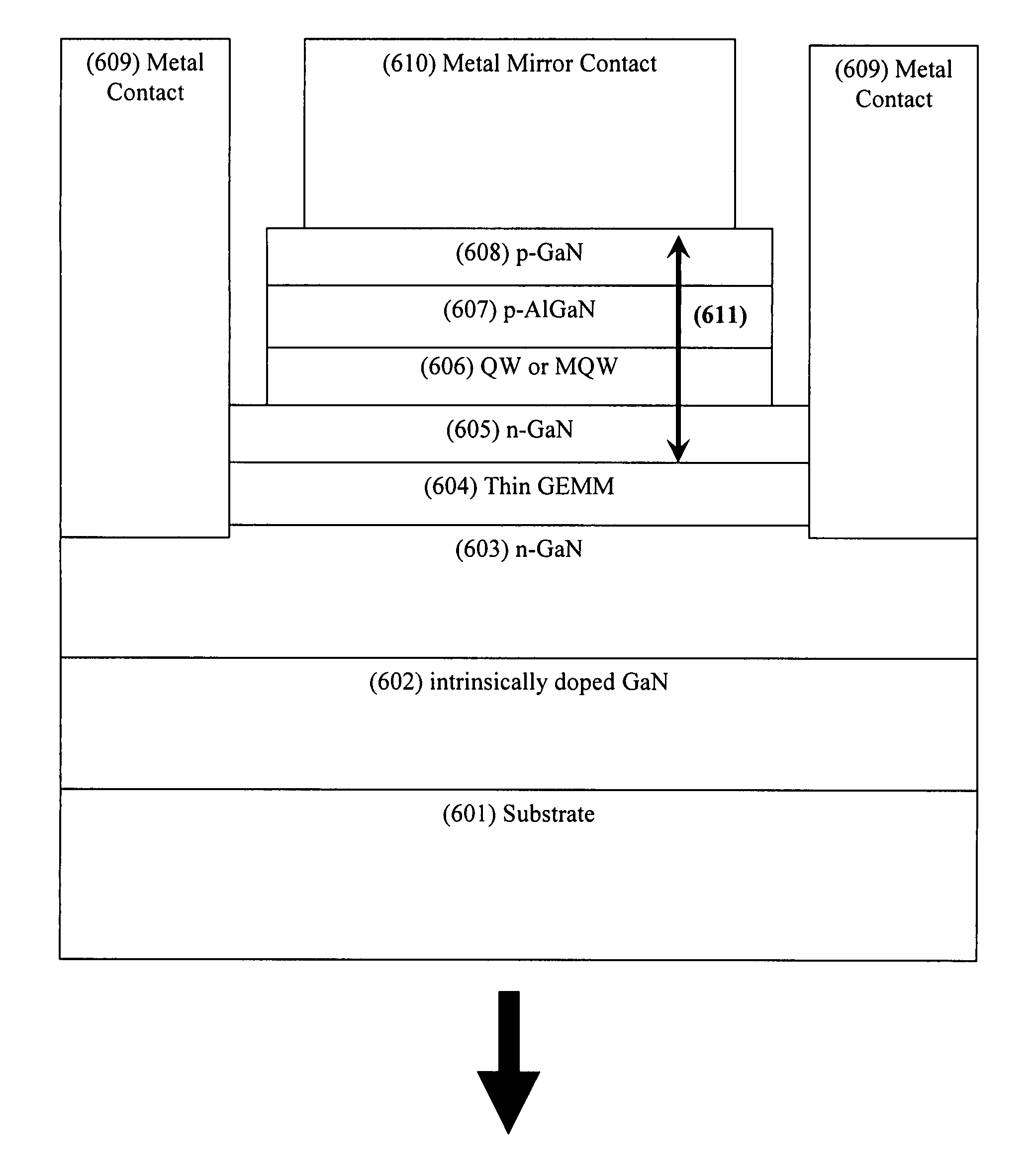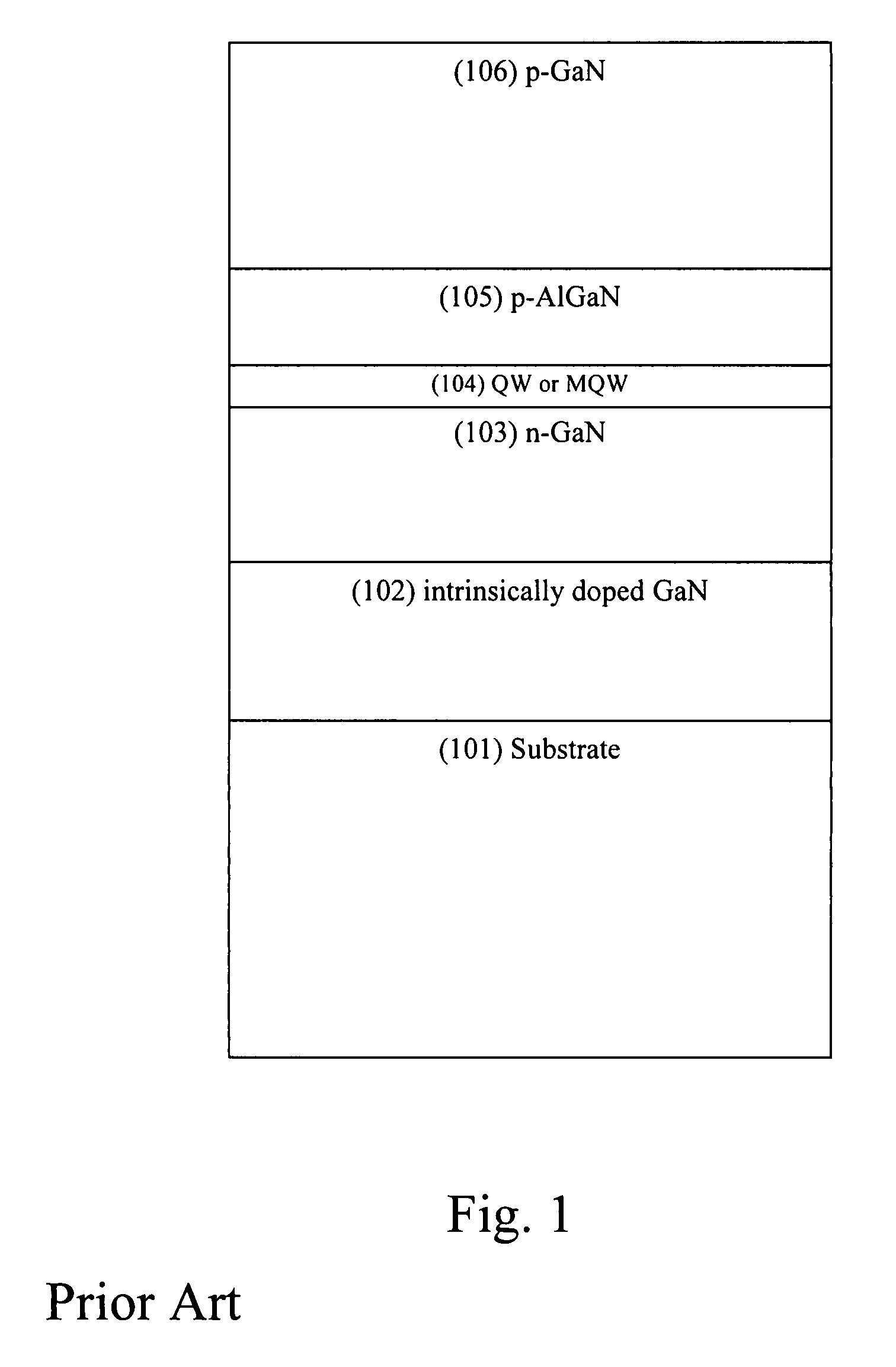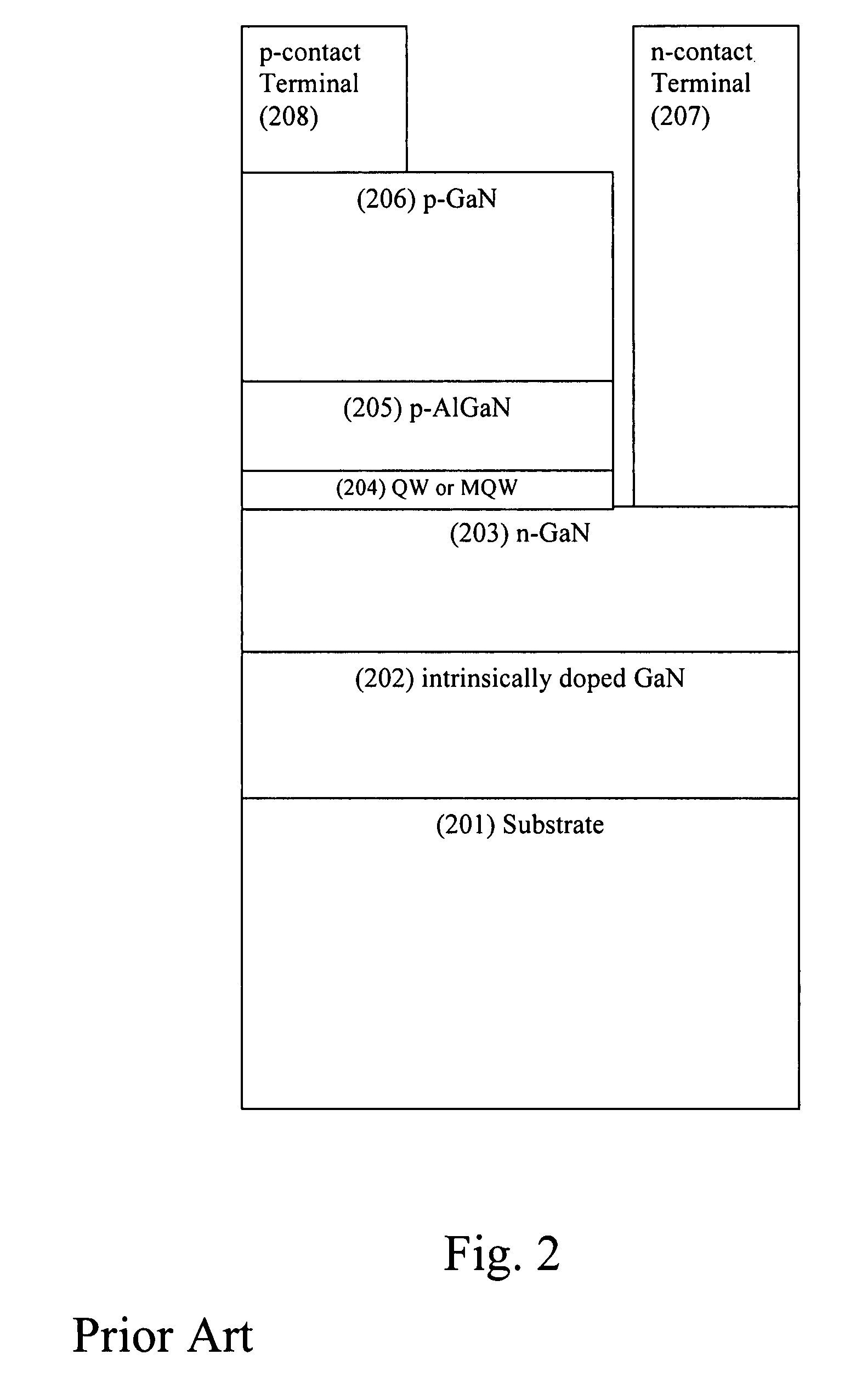III-nitride light-emitting devices with one or more resonance reflectors and reflective engineered growth templates for such devices, and methods
a technology of resonance reflector and light-emitting device, which is applied in the direction of semiconductor devices, basic electric elements, electrical apparatus, etc., can solve the problems of n-type gan layer side being buried, surface texturing and photonic crystal structure suffering from added complexity, and difficult access from the substrate side for further processing, etc., to achieve easy commercialization, less process intensive, and increase the effect of electrical current injection and current distribution
- Summary
- Abstract
- Description
- Claims
- Application Information
AI Technical Summary
Benefits of technology
Problems solved by technology
Method used
Image
Examples
first embodiment
[0095]The structure and band diagram of the first embodiment are shown in FIG. 6 and FIG. 7 respectively.
[0096]The GEMM (604) lends itself to many forms of optical cavity semiconductor light emitters. In the first embodiment the GEMM (604), with its highly reflective bulk properties, may be grown thin such that the GEMM (604) is partially transparent and partially reflective. The first embodiment utilizes a planar III-nitride material growth template comprising of sapphire substrate (601), i-GaN buffer layer (602) and n-GaN layer (603) of device quality so that the crystal quality of the GEMM (604) is planar, specular and of device quality. The GEMM (604) is lattice matched to the n-GaN layer (603) such that the desired thickness may be below the epitaxial critical thickness.
[0097]Once the 2 μm i-GaN buffer (602) and the 2 μm n-GaN (603) layers are grown on a sapphire substrate (601) the GEMM (604) may be grown to a specific thickness (˜20 nm) for the resonant cavity (611) such that...
second embodiment
[0113]The structure and band diagram of the second embodiment are shown in FIG. 8 and FIG. 9 respectively.
[0114]The GEMM (804) lends itself to many forms of optical cavity semiconductor light emitters. In the second embodiment the GEMM (804), with its highly reflective bulk properties, may be grown thick such that the GEMM (804) takes on its bulk reflective properties. The second embodiment utilizes a planar III-nitride material growth template comprising of sapphire substrate (801), i-GaN buffer layer (802) and n-GaN layer (803) of device quality so that the crystal quality of the GEMM (804) is planar, specular and of device quality. The GEMM (804) is lattice matched to the n-GaN layer (803) such that the desired thickness may be below the epitaxial critical thickness.
[0115]Once the 2 μm i-GaN buffer (802) and the 2 μm n-GaN (803) layers are grown on a sapphire substrate (801) the GEMM (804) may be grown to a thickness (≧150 nm) for the resonant cavity (812). Once the GEMM (804) is...
third embodiment
[0129]The structure and band diagram of the third embodiment are shown in FIG. 10 and FIG. 11, respectively.
[0130]The GEMM (1004) lends itself to many forms of optical cavity semiconductor light emitters. In the third embodiment the GEMM (1004), with its highly reflective bulk properties, may be grown thick such that the GEMM (1004) takes on its bulk reflective properties. The third embodiment utilizes a planar III-nitride material growth template comprising of sapphire substrate (1001), i-GaN buffer layer (1002) and n-GaN layer (1003) of device quality so that the crystal quality of the GEMM (1004) is planar, specular and of device quality. The GEMM (1004) is lattice matched to the III-nitride n-GaN layer (1003) such that the desired thickness may be below the epitaxial critical thickness.
[0131]Once the 2 μm i-GaN buffer (1002) and the 2 μm n-GaN (1003) layers are grown on a sapphire substrate (1001) the GEMM (1004) may be grown to a thickness (≧150 nm) for the surface roughened as...
PUM
| Property | Measurement | Unit |
|---|---|---|
| thick | aaaaa | aaaaa |
| thickness | aaaaa | aaaaa |
| extraction efficiency | aaaaa | aaaaa |
Abstract
Description
Claims
Application Information
 Login to View More
Login to View More - R&D
- Intellectual Property
- Life Sciences
- Materials
- Tech Scout
- Unparalleled Data Quality
- Higher Quality Content
- 60% Fewer Hallucinations
Browse by: Latest US Patents, China's latest patents, Technical Efficacy Thesaurus, Application Domain, Technology Topic, Popular Technical Reports.
© 2025 PatSnap. All rights reserved.Legal|Privacy policy|Modern Slavery Act Transparency Statement|Sitemap|About US| Contact US: help@patsnap.com



